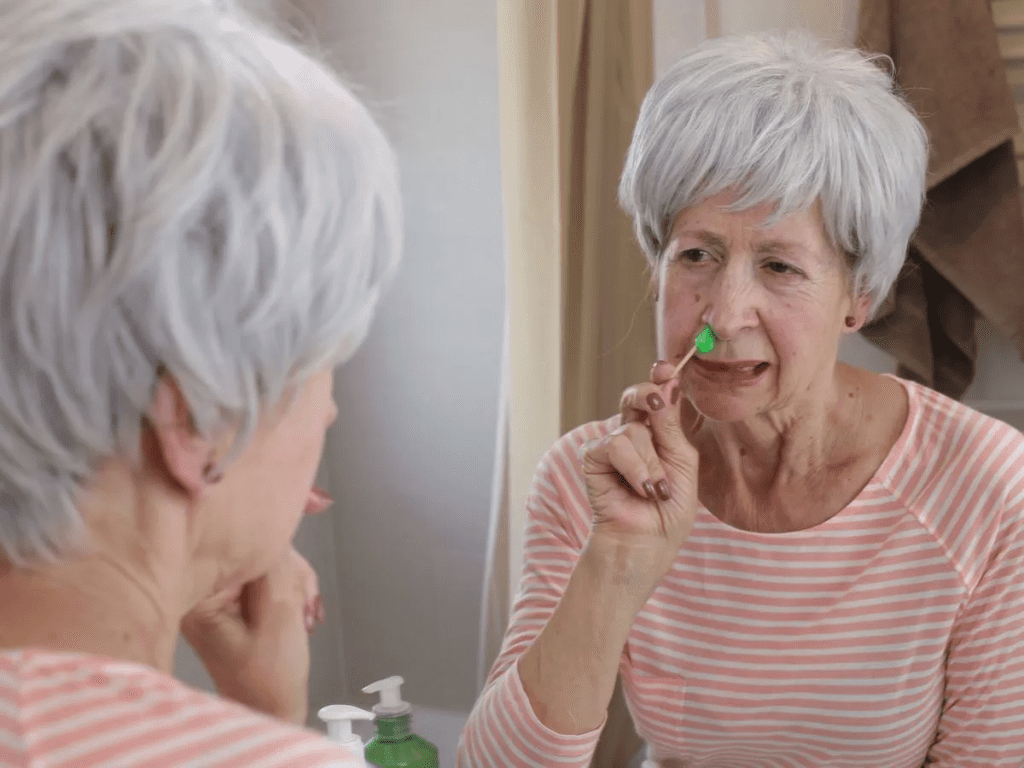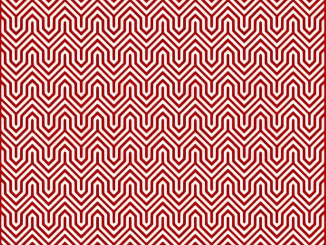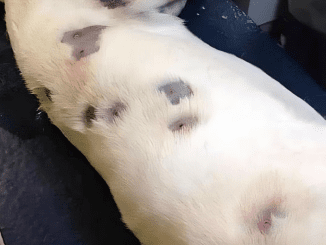Nose hair might not be the most glamorous topic of conversation, but it’s an important one. In today’s world, personal grooming trends have led people to remove hair from various parts of their body, including their nostrils. While waxing or plucking your nose hair might seem like a quick fix for an aesthetic issue, doctors have revealed that it can lead to serious health complications. So, if you’re thinking about removing those pesky hairs, you might want to reconsider.
The Purpose of Nose Hair: More Than Just an Eyesore
Before diving into why you should avoid plucking or waxing your nose hair, it’s essential to understand why we have nose hair in the first place. Nose hair serves an important biological function: it acts as the body’s first line of defense against harmful particles in the air.

Experts recommend never to wax your nose. Credit: Tatiana Maksimova/Getty Images
Dr. Michael Jacobs, a board-certified dermatologist, explains that nose hairs help filter dust, pollen, and other airborne particles, keeping them from entering the respiratory system. They also trap moisture, preventing the nasal passages from drying out. Without this barrier, you’d be far more susceptible to allergens, pollutants, and even infections.
Additionally, nose hairs trigger the sneeze reflex, which helps expel foreign particles trying to enter the nose. It’s nature’s way of protecting your lungs and ensuring the air you breathe is as clean as possible. While trimming long or protruding nose hairs might be tempting, they play a crucial role in your overall health.
Plucking or Waxing Can Lead to Dangerous Infections
If you’ve ever plucked a nose hair, you’re familiar with the sharp sting that follows. What you might not know is that removing nose hairs by plucking or waxing can open the door to some pretty nasty side effects.
Dr. Don J. Beasley, a board-certified otolaryngologist (ear, nose, and throat specialist), cautions that plucking nose hair creates tiny wounds in the skin, which become potential entry points for bacteria. This can lead to folliculitis, an infection of the hair follicle that causes redness, swelling, and pus-filled pimples. While mild cases may resolve on their own, more severe infections could require medical intervention and may even result in scarring.
Moreover, plucking and waxing can cause nasal cellulitis, a deeper skin infection. This condition can cause serious redness, swelling, and even fever if left untreated. In extreme cases, these infections can spread beyond the nose, potentially leading to life-threatening complications.
The Risk of Breaching the Skin Barrier
When you wax your nose hair, you aren’t just removing unwanted hair—you’re also creating small openings in the nasal skin. Dr. Nicole Aaronson, another board-certified otolaryngologist, explains that waxing breaches the skin’s protective barrier, allowing bacteria to enter the body more easily.
This breach increases the risk of infection, especially since the nasal passages are home to numerous bacteria. Any open wound, no matter how small, becomes an invitation for these microorganisms to infect the deeper tissues. This is particularly dangerous in the nose, where blood vessels are abundant and infections can spread rapidly.
Why Ingrown Hairs Can Be Painful and Dangerous
Another potential side effect of removing nose hairs is the formation of ingrown hairs. When hair is plucked or waxed, it can grow back incorrectly, curling into the skin rather than out of the follicle. In the sensitive nasal cavity, an ingrown hair can lead to irritation, pain, and infection.

Tweezing your nose hair is also a big no-no. Credit: Uwe Krejci/Getty Images
Ingrown hairs can cause discomfort and sometimes lead to painful cysts or abscesses. These cysts may require medical treatment, such as draining or antibiotics, to prevent further complications. If you’re already dealing with sinus issues or allergies, the last thing you want is an ingrown hair making things worse.
Waxing: A Risky Trend in Nose Hair Removal
While plucking has been a go-to method for many, waxing has become a popular alternative for those seeking a longer-lasting solution. However, the risks associated with waxing are even greater than those of plucking. Waxing not only removes hair but can also damage the delicate tissue lining the nasal cavity.
Dr. Beasley warns that the heat from the wax can burn the nasal mucosa, the moist tissue that lines the inside of your nose. This damage can create small lesions, leaving the nasal passages even more vulnerable to infection. Beyond the risk of burns, the discomfort of waxing—especially in such a sensitive area—often outweighs any temporary benefits.

You’re best off leaving the hairs alone, or using scissors or an electric trimmer instead. Credit: PeopleImages/Getty Images
While waxing may seem like a convenient option, the risks far outweigh the rewards. Nose hairs grow back quickly, and the process of waxing can lead to redness, irritation, and a heightened risk of infection.
Alternatives to Waxing and Plucking: Safe Ways to Manage Nose Hair
If you’re bothered by visible nose hairs, there are safer ways to manage them without risking your health. The best option is to use a small pair of scissors with rounded tips to trim any hairs that are protruding from your nostrils. Be sure to clean the scissors before and after each use to minimize the risk of infection.

Another effective method is to use an electric nose hair trimmer, which is designed to safely trim hairs without pulling them out. These trimmers cut the hair down to a shorter length without damaging the follicle or creating open wounds. They’re quick, painless, and—most importantly—safe.
Conclusion: Why You Should Leave Your Nose Hairs Alone
While it may be tempting to pluck or wax your nose hairs for cosmetic reasons, the health risks far outweigh the benefits. Your nose hairs are there for a reason: they protect your body from harmful particles, keep your nasal passages moisturized, and serve as a critical defense mechanism for your respiratory system.
Doctors strongly advise against removing nose hairs through plucking or waxing, as doing so can lead to infections like folliculitis, nasal cellulitis, and painful ingrown hairs. If you find that your nose hairs are becoming an aesthetic concern, the safest approach is to trim them with scissors or an electric trimmer. Your nose—and your health—will thank you for it.


